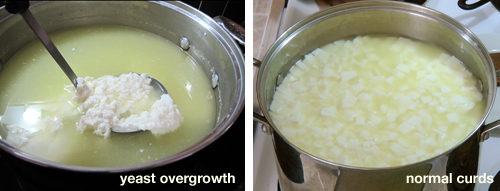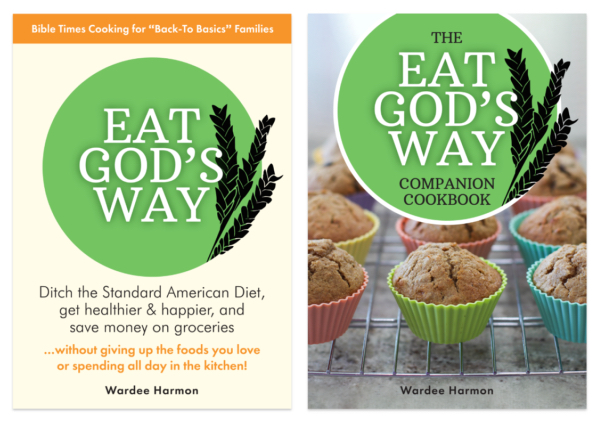Most cheese recipes tell you to add the starter culture when the milk reaches a certain temperature. As I explain in the video above and in the Cultured Dairy and Basic Cheese eCourse, I prefer to add starter culture(s) while bringing the milk up to temperature.
This inoculates it from the beginning, to protect the milk from being overtaken by other cultures in the air (such as from dairy kefir, water kefir, sourdough, Kombucha and other cheeses). You know, the cultures in a typical traditional kitchen!
Although my experience is entirely experiential, and I can’t guarantee your success, I am a believer in doing it this way — because it works for me.
Last year was the first time I was actively using sourdough while making cheese. I added my starter culture according to the recipe I was following — when the milk got to temperature.
Not a good day for cheese. The curds were overtaken by the sourdough’s yeasts and when I went to cut them, they were a fluffy, yucky mess — typical yeast contamination. Normal curds are distinct, custard-like cubes. (See photo below.)

I was bummed, as you can imagine. Who likes to waste all that milk, time, and energy?
Then I talked to Jerri Bedell from Homesteader Supply on her internet radio show. She mentioned adding a culture at the beginning of cheesemaking — though for another reason.
A light bulb went off in my head.
Could adding a culture at the beginning protect the milk from the yeasts and bacteria of my other cultures? It was worth a try. I tried it — and it worked!
I now make successful, delicious, beautiful cheeses in the same busy kitchen that also contains my sourdough starter, water kefir, dairy kefir, Kombucha, other cheeses, and other lacto-ferments.
What do you think? Have you ever lost batches of cheese to yeast contamination or from being overtaken by other cultures? If so — I’m sorry. I know what that’s like! I hope this will help you.
Like my free videos? Please subscribe to the Traditional Cooking School Channel on YouTube — and give this or any other video a thumbs-up!
...without giving up the foods you love or spending all day in the kitchen!

2 free books:
Eat God's Way
Ditch the Standard American Diet, get healthier & happier, and save money on groceries...
We only recommend products and services we wholeheartedly endorse. This post may contain special links through which we earn a small commission if you make a purchase (though your price is the same).


been sending friends your way – referring to you as the cheese-making guru!! xoxo
Thank you, Kelly!
Okay, so now I know what went wrong! A recent cheese batch went badly, actually just like what you showed. I was pretty frustrated but wasn’t sure what happened. Now I realize that the sourdough which was only two feet away was probably to blame. Hmm. I will definitely be more careful next time. Thanks for the tips!
I had dinner this weekend with a friend’s mother who happens to be both a WAPF chapter leader and an artisan cheese maker. I am now ready to DIY a cheese press so I can start pressed cheeses with queso fresco. Whoohoo! I have LOVED your cheesemaking class.